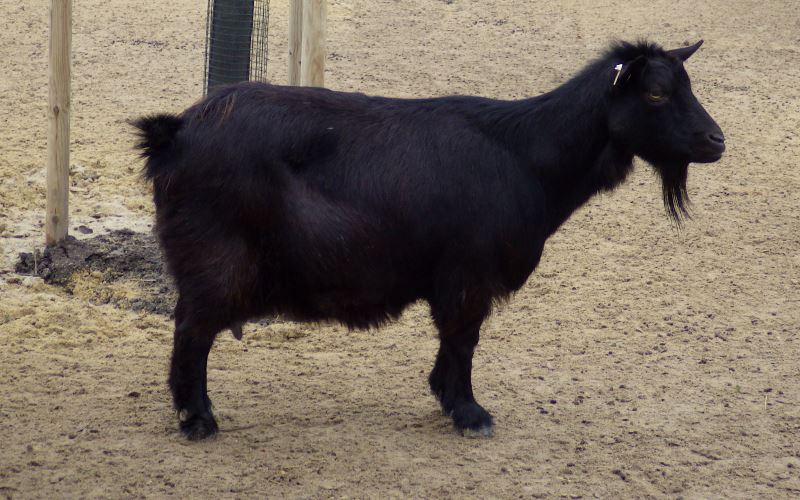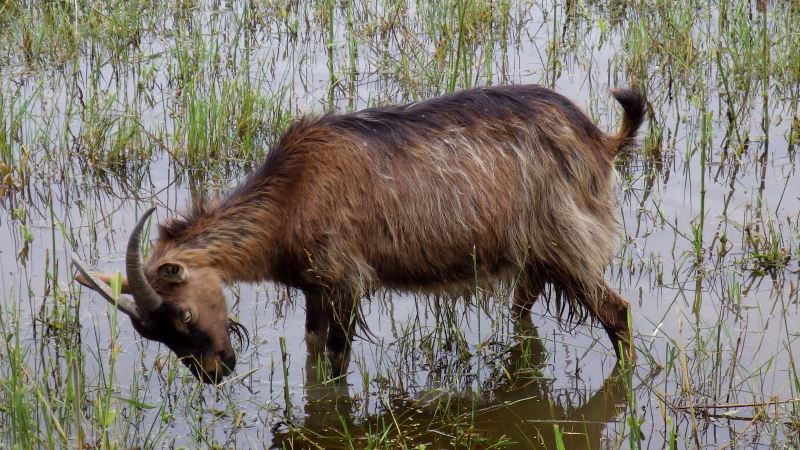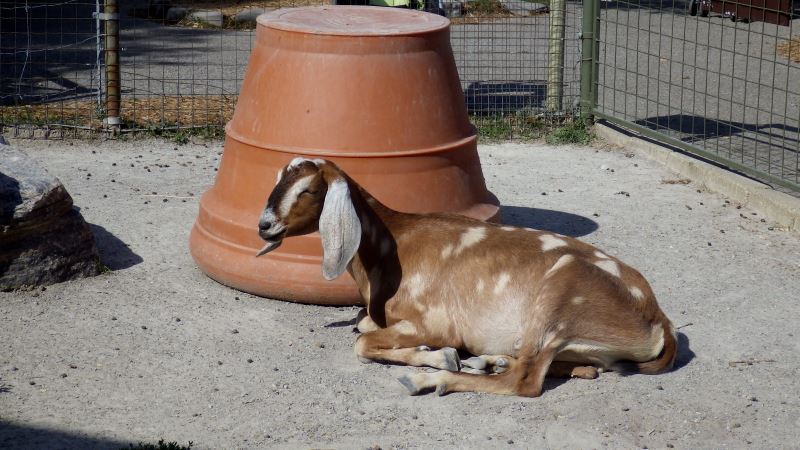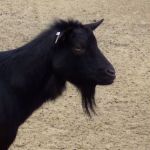Domestic goats are one of the oldest livestock kept by humans. Goats are ruminant herbivores just like their relatives the sheep and the cows, and goats can live on grass or other wild plants growing around areas inhabited by humans.

Domestic goat (Capra aegagrus hircus), Veszprém Zoo.
At first approximation goats are immensely useful creatures. Goat milk and meat serves as important food for humans. Goat cheese and goat milk is appreciated even in developed countries — in poorer areas goat milk might be the only milk available. Goat skin and goat hair can be used used as raw materials for various goods. Goats eat even the worst vegetation that almost no other animal would touch and transform it into something useful. In poorer countries goats might seem to be the only viable option of having livestock that can survive on the local vegetation and provide people with something to eat. For people living in abject poverty the possession of a goat can make all the difference between struggling to survive or having an at least somewhat reliable source of food or even a source of income if some of goat’s milk, or the cheese produced from it is sold.
Goats were once considered to be one of the the cheapest kind of livestock — certainly the cheapest one that produces milk. This is why goats were, and in some regards still are, considered to be “the poor man’s cow”.

Goat browsing in a flooded area in the Szeged Zoo.
On the other hand, goats literally will eat a lot of plants with roots and all, or the very least everything above ground down to the roots. Which usually means plants grazed by goats have a good chance of dying.
The upside is that goats can be used for land clearing: instead of burning down all the vegetation, a herd of goats can just be left browsing there. They do remove the weeds rather efficiently.
The downside is that overgrazing by goats kept as livestock, especially in larger numbers, brings up all sorts of issues when the plants goats feed on just disappear from the vegetation and the often thin layer of top soil is pulverized by the hooves of the goat herds, and gets carried away in the wind. This often leads to a dramatic change in vegetation, soil erosion, and general destruction of the resources that have sustained the goats in the first place.
In other words goats kept and protected from predators by humans can be the instruments of widespread environmental destruction as they can literally eat an area bare and transform almost any place into desert. Just one example — and unfortunately not the only one — that modern technology is not to blame for for all the negative environmental impact human civilization had on the planet. Some of the low tech solutions, such as goat herding, can be just as unsustainable over long periods of time as modern technology is, even though only the latter is blamed for all our problems on a daily basis in the media.

Nubian goat, Toronto Zoo.
If you are considering getting a goat as a pet or as a farm animal beware that goats have some unusual habits such as they love to climb up things. A goat that roams free can easily end up on the roof of a house. Goats will also eat stuff that is not really food including plastic bags of clothes from a cloth line. Goats can also be somewhat unpredictable and jump at unexpected times or attack a human with their horns from behind when the humans least suspects it. So one does need to exercise proper caution with goats even if they do look harmless and cute.
Further Readings:
Data Highlights – 14: World on the Edge by the Numbers – Growing Goat Herds Signal Global Grassland Decline.
Growing Goat Herds Signal Global Grassland Decline.
Your cheap sweater’s real cost – Chicago Tribune.


